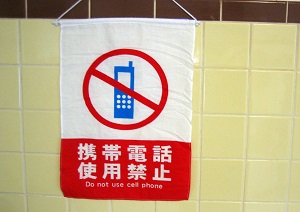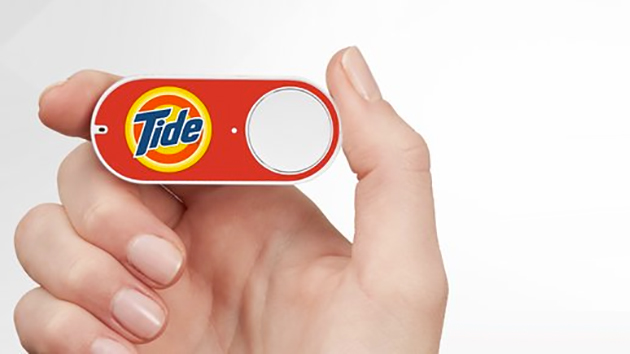 If a shopper marketer was to believe the headlines in the marketing press these days, then mobile shopper marketing is IT. The hype would suggest that today shoppers cannot make a single purchase decision without checking prices, reviews and Facebook opinions on their phones. Line after line of copy suggests that 75%, or 66%, or 83% (pick your stat!) of shoppers use their mobile when shopping. A shopper marketer could be forgiven for thinking that mobile shopper marketing is all they need to worry about. And yet this is in contrast to all of the data I see in my work: category by category, country by country. While digital sources are sometimes part of a purchase journey, the data I see suggest that, for many shoppers, in many categories, most of the time, their phone stays in the pocket. So finally, it was with great delight that I saw this lovely article about a new survey commissioned by Geometry Global. It focused on Millennials, but again, this is the group that have probably been hyped more than any as mobile shoppers. And, according to Geometry Global’s data, swathes of shoppers have no interest in consulting their phones whilst shopping. So what should shopper marketers think, and more specifically do, about mobile shopper marketing?
If a shopper marketer was to believe the headlines in the marketing press these days, then mobile shopper marketing is IT. The hype would suggest that today shoppers cannot make a single purchase decision without checking prices, reviews and Facebook opinions on their phones. Line after line of copy suggests that 75%, or 66%, or 83% (pick your stat!) of shoppers use their mobile when shopping. A shopper marketer could be forgiven for thinking that mobile shopper marketing is all they need to worry about. And yet this is in contrast to all of the data I see in my work: category by category, country by country. While digital sources are sometimes part of a purchase journey, the data I see suggest that, for many shoppers, in many categories, most of the time, their phone stays in the pocket. So finally, it was with great delight that I saw this lovely article about a new survey commissioned by Geometry Global. It focused on Millennials, but again, this is the group that have probably been hyped more than any as mobile shoppers. And, according to Geometry Global’s data, swathes of shoppers have no interest in consulting their phones whilst shopping. So what should shopper marketers think, and more specifically do, about mobile shopper marketing?
This report from Geometry vindicates for me that creeping unease that something is amiss: that there is a huge yawning gap between the hyperbole and the facts. But how can that be explained? My theory is that it is a simple case of playing ‘free and easy’ with the data. A statistic may say that 70% of shoppers use their mobile while shopping. The data may show that 70% of people say that they have used their mobile when shopping. See the difference? The first infers that 70% of shopping decisions (or at least trips) involve a mobile. The second says that most people have (at least once) used their phone. Consider how many items you buy in a month. Hundreds? There is a big difference between using your phone once in all those decisions, and using it 70% of the time. But my version of the data doesn’t sell mobile solutions! As someone once said (unfortunately I can’t remember, forgive me) “the data never lies, it’s the stories we tell with the data that lie”.
So should we forget about mobile shopper marketing?
Not at all. In many categories, mobile is significant. No media or marketing route should be discounted out of hand. But neither should it be embraced simply because ‘lots of shoppers do it’. To work out what to do about mobile shopper marketing for your specific situation, ask yourself the following question:
Which shoppers am I targeting?
In any category, in any channel there will be some shoppers using their mobile, and some not. The question that should start any shopper marketing decision is “which shoppers am I targeting?” And this isn’t a ‘cut and paste’ of the target consumer profile: this is a specific statement which describes which shoppers we are focusing on, right now in this channel to drive our growth.
What do I want them to do differently?
Before we can decide which activity is appropriate, we need to set a shopper objective: a behavioral objective which describes exactly what we want our target shopper to do.
How do they currently shop my category, and what role does each media play in this?
This is where mobile versus non-mobile comes in. Do your target shoppers make decisions in-store, and do they use their phones to help in this? If mobile is currently not used by your target shopper when they shop your category, then and mobile shopper marketing will need to be highly disruptive to succeed.
Which other categories do they shop on the same trip, and what role does each media play in this?
If they don’t use mobile at any point on this shopping trip, the task is doubly hard. A simple rule of thumb. Focus on the media that we know already influences our target shopper in this decision.
Which media and activity currently influences their decisions?
By looking broad, and considering all possible media, all possible activities, and selecting those that are most likely to influence the specific shopper you are targeting, then you are most likely to succeed. If your target shoppers use mobile to shop your category, go ahead and use mobile shopper marketing! If not, find what else influences them.
And as a footnote, be careful. In this article they suggest that Millenials like “buy one get ones’ or discounts, and imply that shopper marketers should focus here. Everyone likes discounts and BOGOs! Come on! That isn’t targeted, that isn’t marketing! That is about as generic and ‘un-marketing’ as you can get. If you can’t come up with anything better then I would humbly suggest that you go back and re-read the five questions above.
If you like what you’ve read above, then please subscribe. If you’d like to share some of this thinking with your team or colleagues, I’ve begun to share a series of short PowerPoint presentation on Slideshare, which you are welcome to download for free.
Image: Flickr




